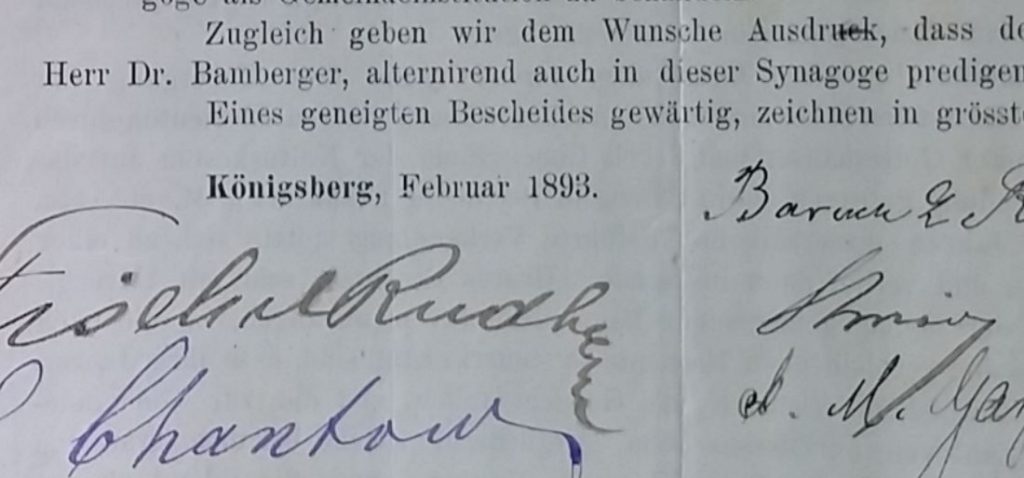The Jews of Königsberg at the turn of the 20th century
Matters of belief
Synagogues
“Pure pleasure and an inner contentment were afforded me when I visited the liberal organ synagogue each New Year’s feast and Day of Atonement. Apart from the magnificent singing of the chief cantor Weintraub, who still had a wonderful voice even as an old man, it was a joy to hear Rabbi Dr. Bamberger from the pulpit. […] The whole congregation, young and old, poor and rich, adored, indeed loved him, for both within his official duties and outside of them he was always quite awe-inspiring.”
(Aron Liebeck)

92. Chief cantor Eduard Birnbaum (1855-1920). He came from Cracow.
“Birnbaum […] possessed a fine baritone that was clear as a bell; he used it to present the songs in a way that made them so reflective. He had a deep Jewish knowledge of the cantor’s skill and outside of his official duties he was also a real musician in the truest sense of the word.”
(Aron Liebeck)


93. 90. Rabbi Dr. Esra Munk (1867–1940). He came from Altona.
In 1893 Dr. Esra Munk, who had taken his degree in Königsberg in 1890, became the rabbi for the congregation Adass Jisroel. Beginning in 1897, two rabbis were employed at the new synagogue, Dr. Hermann Vogelstein and Dr. Felix Perles.

89. Old Synagogue on Synagogue Street 2


58. 94. Letterhead of Rabbi Bamberger

91. Cantor Hirsch Alter Weintraub (1817–1881). He came from Dubno.

88. Orthodox Synagogue on Synagogue Street 14-15

95. Family of 2nd Rabbi Dr. Felix Perles (1874–1933). He came from Munich. In the middle of the picture is his mother, the author Rosalie Perles.

92. Rabbi Dr. Hermann Vogelstein (1870–1942). He came from Pilsen.
Director's Cut
Not all members of the Jewish congregation agreed with the modern rite of the congregation. In 1893, many influential members of the congregation signed a letter asking the board of directors of the congregation to leave the Old Synagogue to those who did not want an organ in the worship service and did not want to celebrate their service in the planned Great Synagogue. The letter can be found in an archive in Jerusalem.

Jerusalem, January 2017, we are in the apartment of a daughter of the famous Königsberg banker Gerorge Marx (Norddeutsche Creditanstalt) and look at his private balance sheets. They show that he financially supported the Orthodox congregation of Adass Yisroel.



